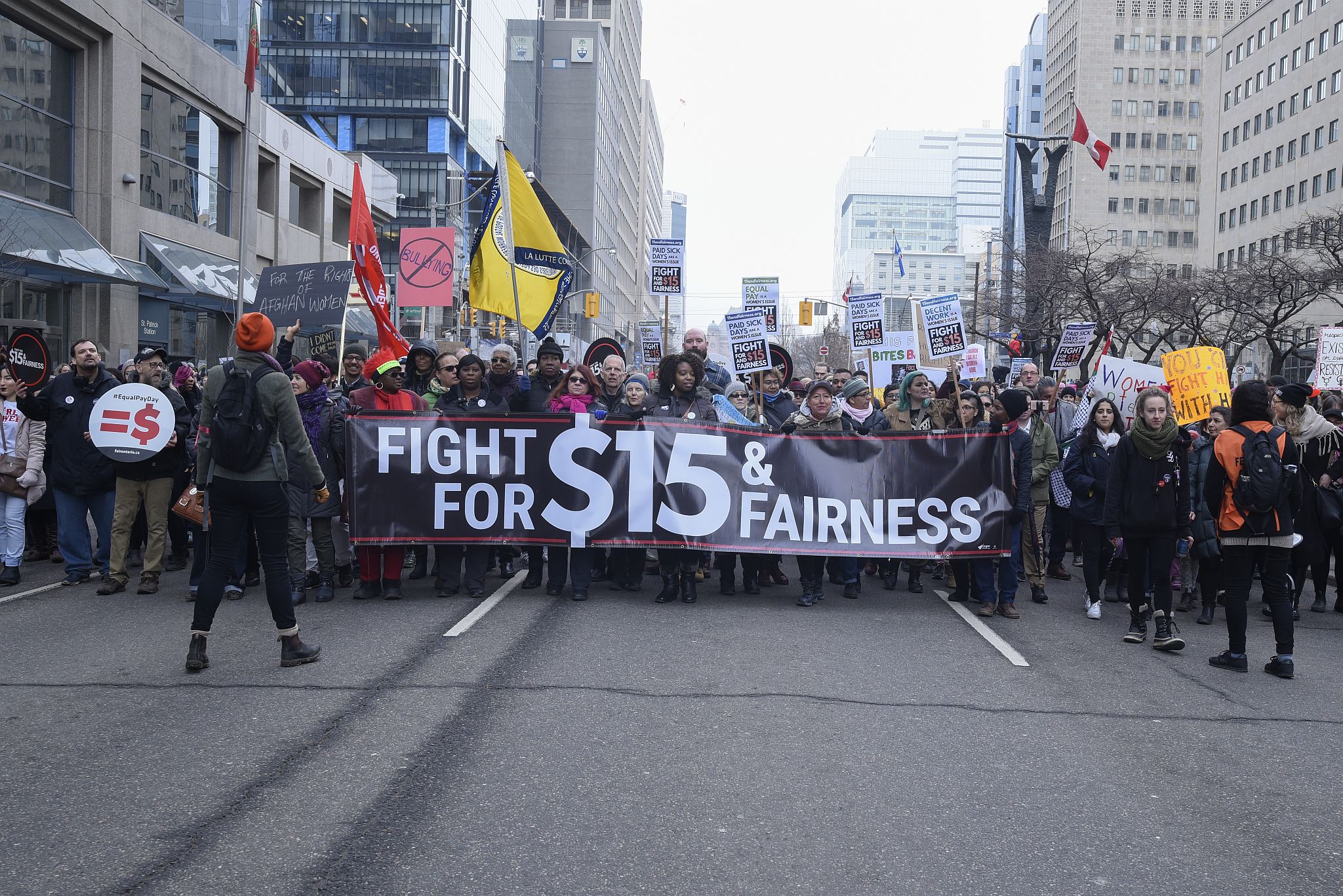
The federal minimum wage is $7.25 an hour and minimum wage for tipped employees, such as waiters, waitresses, nail salon workers or parking attendants is $2.13 an hour.
The annual income for a full time employee making the federal minimum wage working for 1 year, is $15,080 ($7.25 x 40 hours a week x 52 weeks), which is below the federal poverty level for a family of 2.
The current federal wage hasn’t been raised since 2009. Since then, inflation has gone up over 20%.
The minimum wage of the past was a stronger standard, providing significantly more buying power than it does today. In 1938 President Franklin D. Roosevelt first created the minimum wage at 25 cents an hour. Adjusted for inflation, that would be worth about $4.00 an hour today. The minimum wage had its lowest buying power in 1948, when it was worth about $3.81 in today’s dollars. The value of the minimum wage rose relatively steadily until its value reached a high point in 1968, when it was $1.60 an hour. Thereafter, it suffered dramatic erosion as Congress failed to adequately correct for inflation over time. Today the minimum wage is worth 66% of its value in 1968. The minimum wage in 1968 would be worth $10.95 today when adjusted for inflation.
U.S. Bureau of Labor Statistics’ Consumer Price Index
The U.S. minimum wage trails many other developed countries and Australia has the highest where workers make 66% more than their peers in America.
As the value of the minimum wage has declined, employers who increased prices for products and services to keep up with inflation – have made a greater profit at the expense of their workers.
Minimum wage workers are:
35 years old on average
88% are not teenagers
36% are 40 or older
56% are women
28% have children
55% work full time
40% have at least some years of college study.
On average, they earn 50% of their family’s total income.
44% of the workforce in the U.S. earns under $15 an hour, and 32% earns under $12 an hour.
73% of workers earning less than $15 an hour are older than 25.
42% of children in the U.S. live in a household with at least 1 worker earning under $15 an hour.
About 33% of parents earning low wages are single parents.
The top 4 occupations in the U.S. are:
- Retail salespeople — 4,209,500 employees (3.2% of the workforce)– $24,630/year — $11.84 /hour
- Cashiers — 3,439,380 employees– $19,030/year — $9.14/hour
- Office clerks — 2,815,240 employees — $27,700/year —$13.32/hour
- Food preparation and service workers — 2,695,740 employees — $18,120/year — $8.71/hour
In total, there are more than 13 million people in these occupations – mostly women.
Home Care Aides
The median age of the more than 1.4 million home care aides in the US is 45. Nearly 50% graduated from high school and have had some college education. The majority work full-time. However, with a median wage of $10.25 an hour, 54% live near poverty. This is one of the fastest-growing occupations in the US, projected to increase by 26% in the next 10 years.
State Statistics
Many states and municipalities are increasing their minimum wage to keep up with the rising cost of living.
5 states have not adopted a state minimum wage: Alabama, Louisiana, Mississippi, South Carolina and Tennessee.
National Conference of State Legislatures
“Living Wage”
The minimum wage differs from “living wage” in that the living wage is the lowest wage at which subsistence needs can be met by an employee. For example, in no locality in the country can people who earn the federal minimum wage afford the typical two-bedroom apartment.
The National Low Income Housing Coalition
A living wage can be affected by marital status, number of children etc. For example, a single parent needs to make enough to cover basic expenses such as: food, child care, medical expenses, housing, transportation, taxes etc.
The Living Wage Calculator, Massachusetts Institute of Technology (MIT)
Raising the minimum wage to $12 an hour would reduce public assistance spending by $17 billion.
60% of small business nationwide support gradual increases of the minimum wage to $12 an hour.
The Chamber of Commerce, the nation’s largest business trade association, has generally opposed raising the minimum wage.
Sick Days
The U.S. is unique among developed nations in not requiring employers to provide sick days.
The law does not protect workers from being fired if they miss work due to illness. in a recent study, 16% of low wage workers reported having lost a job as a result of taking a sick day.
80% of high wage workers have sick time, compared to 15% of low wage workers.
Among food workers who worked at least one shift in the last year while suffering from vomiting or diarrhea, 49% reported to work (at least in part) because they wouldn’t be paid if they stayed home.
The Centers for Disease Control and Prevention (CDC)
Lack of paid sick days resulted in 5 million additional cases of flu during the 2009 H1N1 epidemic.
Workers with paid sick days are 28% less likely to be injured at work, suggesting that expanding access to paid sick leave could help reduce the incidence of non-fatal occupational injuries, particularly in high-risk sectors and occupations.
American Journal of Public Health
Lack of paid sick leave acts as a barrier to cancer screening and seeking medical care.
The Centers for Disease Control and Prevention National Health Interview Survey
On average employees of small business take 2 sick days per year even when 5 are available to them. But the availability of paid sick leave for times when it’s desperately needed reduces turnover and people showing up for work sick.
